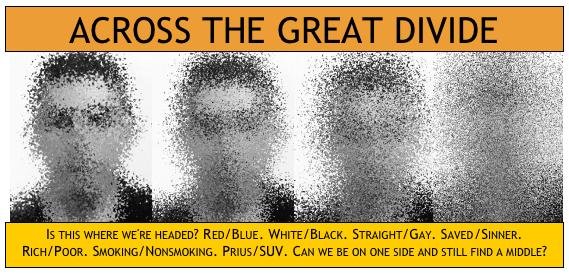Hope for Harsh Places
Each afternoon I hiked through a rugged wedge of public land just north of Colorado National Monument. One day I meet two trail runners and watch a mountain biker snake along another path I’d explored in solitude the day before. Another time, I encounter only a dog with his couple trotting behind. There are bike tracks in the wisps of snow that cling in the shade, but I doubt I’ll ever find the stamina or the nerve to ride in these high places.
It is sunny and pleasant, mountain freezing — a temperature in the low 30s that feels like 60.
Up on Eagle’s Nest, I can see our new house taking shape a thousand feet below. It’s a 12-minute bike ride to the center of town, but houses are sparse here. Nothing but an arroyo stands between us and the harsh, arid lands of Bang’s Canyon and the Monument.
So far.
This week the local paper showed a homeowner standing on the deck of his under-construction dream home, overlooking an area where about 100 new oil and gas wells, a pipeline and a compressor station are planned for 2006. More public land in the area is scheduled to be opened for oil and gas development in a February through a federal lease sale, which could add hundreds of more wells to the resort area.
A couple hundred more miles to the east, people in the historic mountain town of Idaho Springs may find themselves squeezed out by a widened Interstate 70. The highway and its Eisenhower Tunnel have dramatically shortened the trip from Denver to Grand Junction, but they've also stimulated the development of faux towns like Vail and their conversion from resorts to year-round bedroom communities for Denver commuters.
As our president just reminded us, we used to think the oceans would keep our country safe from foreign enemies. Before long, we'll have to give up thinking we can always move farther out. We try to get away from it all, and we just bring it all with us — Lowes, Wal-Mart, Circuit City and Chick-fil-A following our cars like tin cans tied to a newlywed's tailpipe.
There is almost no such thing any more as local color, and the few human-built environments that still qualify are ringed by identical wastelands. Only nature still has enough power to truly distinguish a place, and it, too, is losing out at the fringes. Grasslands once plowed to farmland can be just as easily dozened into cookie cutter malls and industrial parks. Woodlands get trimmed back into amenities that give name to McMansion subdivisions. Lakes become too valuable to leave to the ma and pa resorts, and ocean waves can't beat back the beachfront highrises and casinos forever.
There is still hope for harsh places. They don't take easily to civilization, but as an acquired taste, they naturally attract those who like to own things other people don't have.
Up here, actors, fashion designers and media moguls buy up the old ranches and create their own fantasy lands, but
The fierce escalation of land values they trigger drives real ranchers out of business and prevents working families from ever owning their own home.
Meanwhile, the nostalgia ranchers take advantage of agricultural tax breaks designed to help real ranchers survive.
Westerners now must live with, in the language of real estate ads, "unique lifestyles" of "quiet luxury," which workers can't afford any more than they can afford the $740 cowboy hats in Telluride's "Bounty Hunter" shop.
San Juan Suburbia, Bruce Finley, Denver Post




0 Comments:
Post a Comment
<< Home